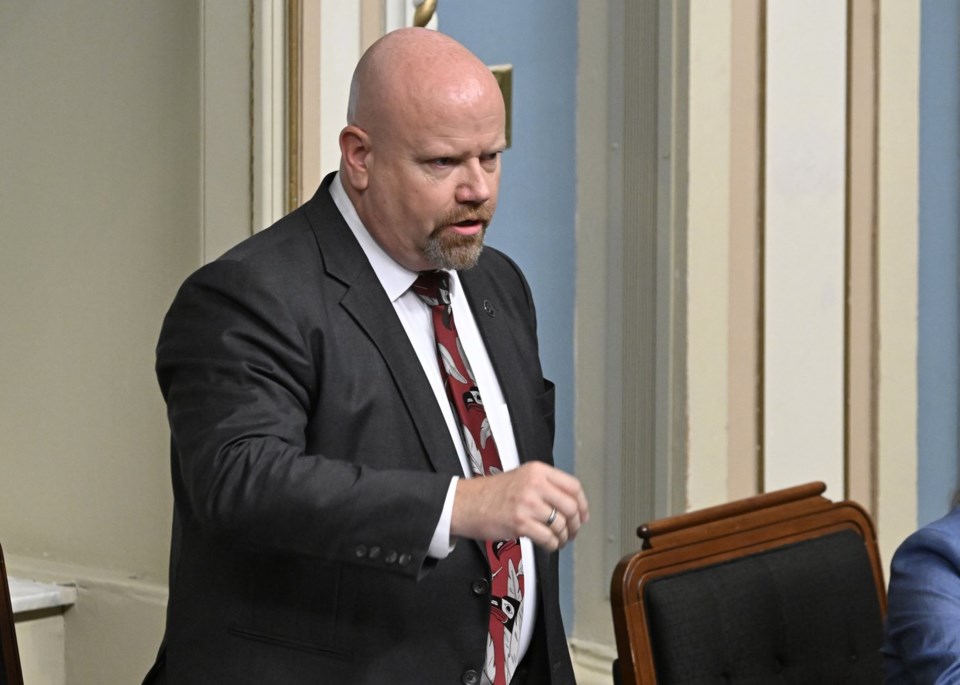MONTREAL — The Quebec government says it will find solutions and defuse rising tension over a forestry bill that has sparked blockades and confrontations between Indigenous protesters and industry workers.
Indigenous Affairs Minister Ian Lafrenière and Natural Resources Minister Maïté Blanchette Vézina have renewed a promise to modify the proposed legislation following meetings this week with Indigenous leaders.
"I am working on amendments," Blanchette Vézina told reporters after a meeting Wednesday morning with the Assembly of First Nations Quebec—Labrador. "We want to find more consensual ways of arriving at a modern forestry regime."
On Tuesday, the two ministers met for six hours with the three communities of the Atikamekw Nation and representatives of the forest industry in La Tuque, Que., about 220 kilometres northeast of Montreal. Blockades in opposition to the legislation have disrupted forestry operations in the area.
Still, it was unclear after the meetings whether they would lead to any immediate de-escalation between protesters and forestry workers.
"(We) succeeded in forcing the government to give in," said an early morning Facebook post Wednesday from the MAMU First Nation, a group that has been organizing blockades. "But it's not over yet."
The bill, tabled in the Quebec legislature this spring, aims to protect communities dependent on the commercial forestry industry. The legislation would divide public forests into zones designated for conservation, multi-purpose use or forestry.
According to the bill, actions that "restrict the carrying out of forest development activities" would be prohibited in the forestry zones, as would conservation measures.
Indigenous leaders were quick to criticize the bill, saying it infringed on their rights. After it was tabled, the MAMU First Nation, which describes itself as a group of hereditary chiefs and land defenders, began setting up blockades of forestry roads in the province.
The blockades have led to hostile exchanges between the group's members and forestry workers, both in person and online, which have escalated in recent days. "This has to stop, because you can see for yourself on social media how it sometimes gets inflamed," Lafrenière said Wednesday.
In response to Tuesday's meeting, the council of the Atikamekw Nation said it remained opposed to the forestry reform bill, but wanted to find solutions to "restore social peace and break the impasse."
But at a council meeting Tuesday evening, La Tuque Mayor Luc Martel stressed that time is running short to avoid more conflict. "It's five minutes to midnight," he said. "The forestry workers' tolerance has reached its limit."
Last month, the Assembly of First Nations Quebec—Labrador announced it was walking away from discussions with the government, which it said had not shown “genuine political will” to collaborate on the forestry reform. The assembly wants the province to scrap the zoning strategy, which it describes as a form of land privatization. It also wants Quebec to put in place a "co-management" model that would see First Nations work with industry and government to determine which areas must be protected.
In an interview Tuesday, Chief Francis Verreault-Paul said the government reached out to the assembly to arrange Wednesday's meeting, and has shown a "general openness" to addressing its demands. But he added that the assembly remains "very firm" on its request to have the zoning model thrown out.
"The current bill proposes a concept that is based on the exploitation of the forest, first and foremost," he said.
Blanchette Vézina said the forestry sector is currently in a "precarious" situation, and the economy of Quebec's regions must be protected. But she also suggested she's willing to give First Nations more say over which areas should be open to forestry. "The way consultations are conducted needs to be reviewed," she said.
In a social media post on Tuesday, Lafrenière said the province wants to use the zoning model to protect 30 per cent of the forest. "Currently, the forestry industry operates on 100 per cent of the territory and this is what we want to change by protecting one-third," he said.
On Wednesday, he added that there are widespread misconceptions about the bill and its aims, and the government must adjust how it explains the proposed reform. "We are going to do it together," he said. "It will work."
This report by The Canadian Press was first published Aug. 20, 2025.
Maura Forrest, The Canadian Press



